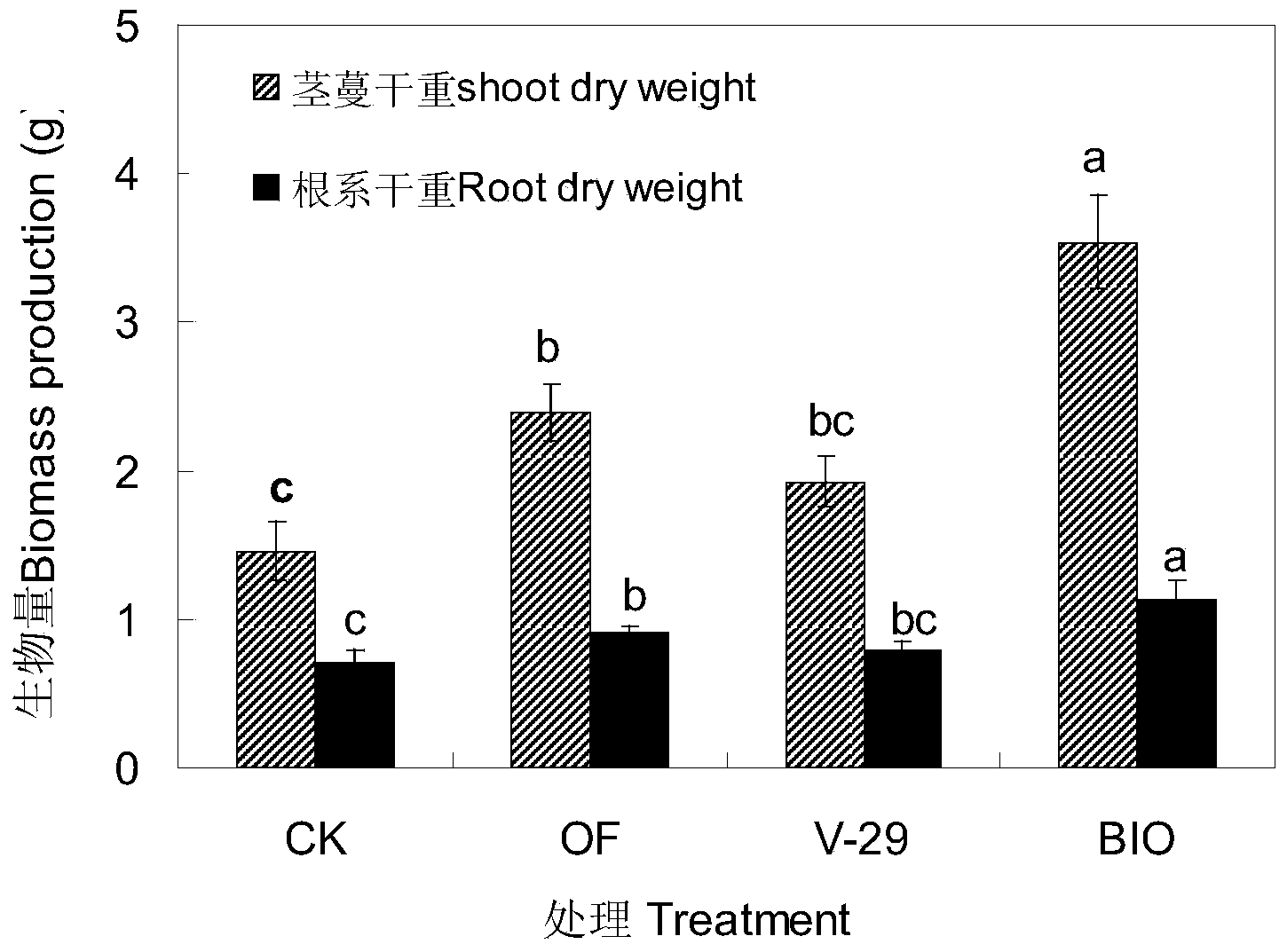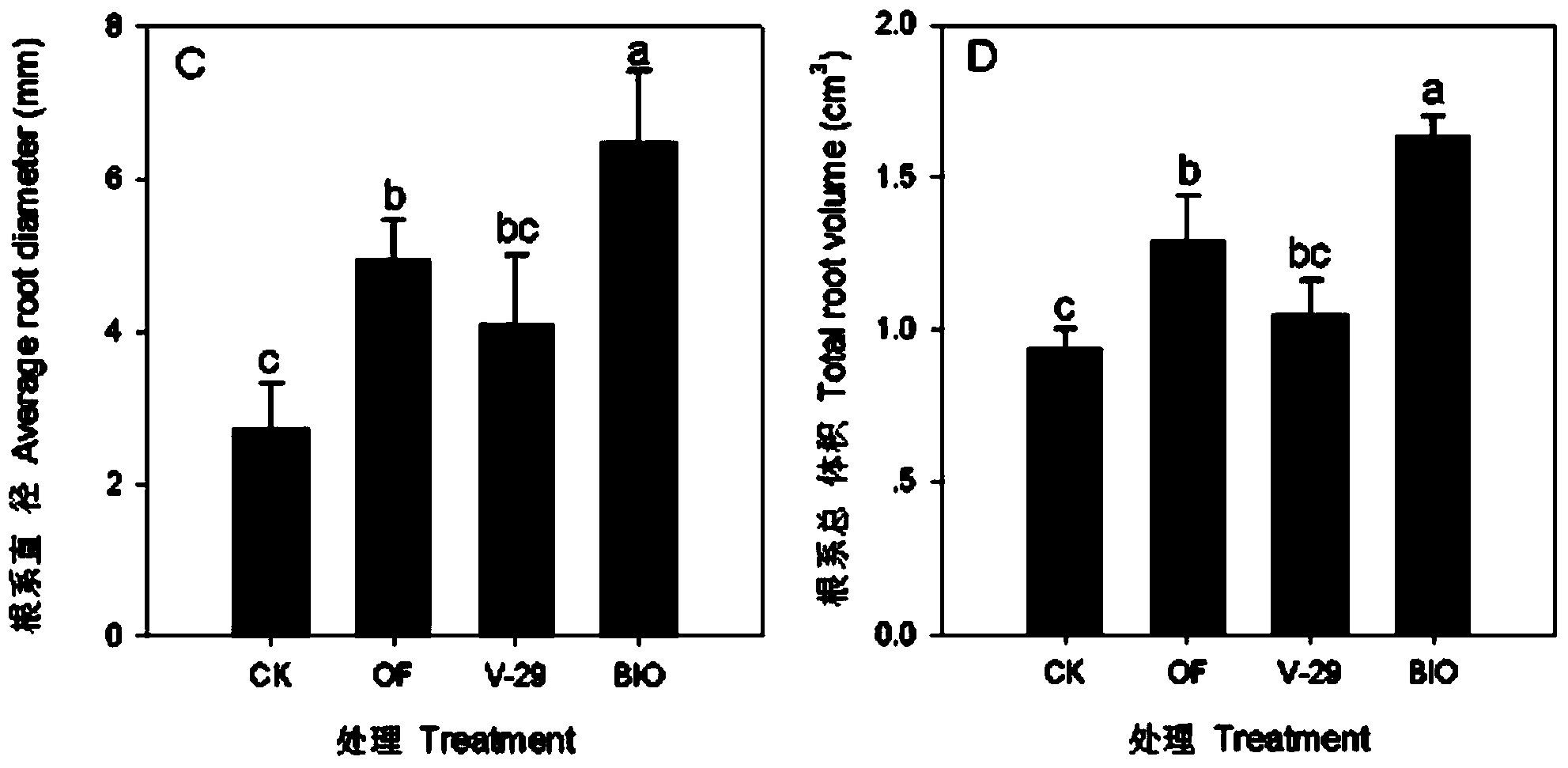Burkholderia and application thereof
A technology of Burkholderia and Holderia, applied in the field of microorganisms, can solve the problems of increased burden on farmers, increased production costs, and decreased quality of pods, so as to improve the soil microbial environment, promote growth, and eliminate continuous cropping The effect of biological barriers
- Summary
- Abstract
- Description
- Claims
- Application Information
AI Technical Summary
Problems solved by technology
Method used
Image
Examples
Embodiment 1
[0029] Embodiment 1: the isolation and identification of Burkholderia described in the present invention
[0030] The rhizosphere soil with better growth in the 20-year-old vanilla orchid plantation was selected, and the samples were taken back to the laboratory for dilution, coating, and cultivation. Select the strains with obvious phosphate-dissolving circles on the NBRIP selective medium, and then re-screen the high-efficiency growth-promoting bacteria V-29 through pot experiments. The strain V-29 was identified by 16S rDNA method, which belonged to Burkholderia stabilis, could solubilize phosphorus, and grew well under the condition of starch and beef extract as the only carbon and nitrogen sources.
[0031] The Burkholderia bacterium was preserved on August 3, 2013 in the General Microbiology Center of the Chinese Microbiological Culture Collection Management Committee, the address is No. 3, No. 1, Beichen West Road, Chaoyang District, Beijing, Institute of Microbiology, ...
Embodiment 2
[0032] Embodiment 2: the preparation of microbial fertilizer of the present invention
[0033] Inoculate Burkholderia bacterium with preservation number CGMCC No.7980 in NA liquid medium with a pH value of 6-8, shake and culture at 28°C-35°C, 160-220 rpm for 36 hours, Centrifuge the bacteria, resuspend with sterile water, centrifuge again, and suspend with an equal volume of sterile water to obtain a bacterial suspension; among them, the formula of the NA liquid medium is: beef extract 5g / L, peptone 10g / L, chloride Sodium 5g / L, the balance is water.
[0034] Inoculate the bacterial suspension into the decomposed cow dung (the volume mass ratio of the bacterial suspension to the decomposed cow dung is 2mL:10g) for solid fermentation until the number of Burkholderia bacteria reaches 10 8 cfu / g or more, during which the solid fermentation temperature is not higher than 50°C, turning once a day to obtain microbial fertilizer. Among them, the mass ratio of organic matter in decom...
Embodiment 3
[0037] Embodiment 3: pot experiment
[0038] Collect 20-year-old vanilla orchid plantation soil with obvious continuous cropping biological obstacles as the test soil. The test pot uses a turnover box (inner size 600×420×165mm), and selects healthy vanilla orchids with the same growth as the test. Seedling.
[0039] Inoculate the strain V-29 marked with green fluorescent protein molecules into 2000ml NA liquid medium containing 0.3mg / ml kanamycin, culture on a shaker for 36h, centrifuge the bacteria, resuspend with sterile water, and centrifuge again. The bacterial suspension obtained after suspending with an equal volume of sterile water; wherein, the formula of the NA liquid medium is: beef extract 5g / L, peptone 10g / L, sodium chloride 5g / L, and the balance is water.
[0040] Inoculate the bacterial suspension into the decomposed cow dung (the volume mass ratio of the bacterial suspension to the decomposed cow dung is 2mL:10g) for solid fermentation until the number of Burkh...
PUM
 Login to View More
Login to View More Abstract
Description
Claims
Application Information
 Login to View More
Login to View More - R&D
- Intellectual Property
- Life Sciences
- Materials
- Tech Scout
- Unparalleled Data Quality
- Higher Quality Content
- 60% Fewer Hallucinations
Browse by: Latest US Patents, China's latest patents, Technical Efficacy Thesaurus, Application Domain, Technology Topic, Popular Technical Reports.
© 2025 PatSnap. All rights reserved.Legal|Privacy policy|Modern Slavery Act Transparency Statement|Sitemap|About US| Contact US: help@patsnap.com



